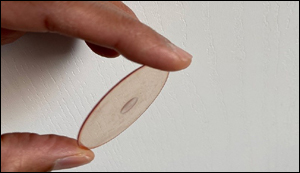Researchers Create Focus-Free Camera with New Flat Lens
13. 3. 2020 | Optical Society | www.osa.org
Using a single lens that is about one-thousandth of an inch thick, researchers have created a camera that does not require focusing. The technology offers considerable benefits over traditional cameras such as the ones in most smartphones, which require multiple lenses to form high-quality, in-focus images.
“Our flat lenses can drastically reduce the weight, complexity and cost of cameras and other imaging systems, while increasing their functionality,” said research team leader Rajesh Menon from the University of Utah. “Such optics could enable thinner smartphone cameras, improved and smaller cameras for biomedical imaging such as endoscopy, and more compact cameras for automobiles.”

Conventional cameras, whether used in smartphones or for microscopy, require focusing to ensure that the details of an object are sharp. If there are multiple objects at different distances from the camera, each object must be focused separately. The new lens eliminates the need for focusing and allows any camera to keep all the objects in focus simultaneously,” said Menon. “Conventional cameras also use multiple lenses to keep different colors of light in focus simultaneously. Since our design is very general, we can also use it to create a single flat lens that focuses all colors of light, drastically simplifying cameras even further.”
Read more at Optical Society
Image Credit: University of Utah
-jk-




